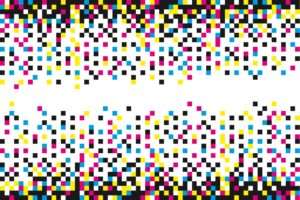 Choosing the right image format is essential when working with digital graphics, whether it’s for web design, logos, print materials, or any other creative project. The two primary types of image formats are vector and raster, and each has its unique characteristics, strengths, and weaknesses. In this blog post, we’ll explore the differences between vector and raster images, their advantages and disadvantages, and how to determine which format is best suited for your needs.
Choosing the right image format is essential when working with digital graphics, whether it’s for web design, logos, print materials, or any other creative project. The two primary types of image formats are vector and raster, and each has its unique characteristics, strengths, and weaknesses. In this blog post, we’ll explore the differences between vector and raster images, their advantages and disadvantages, and how to determine which format is best suited for your needs.
1. Understanding Vector Images
Vector images are created using mathematical formulas and geometric primitives like points, lines, curves, and shapes. This means that they can be scaled up or down without losing quality, making them ideal for high-resolution displays or large-scale printing. Vector images are typically used for:
- Logos and branding elements
- Text and typography
- Illustrations and icons
- Maps and architectural designs
Advantages of Vector Images
- Infinite scalability without loss of quality
- Smaller file sizes compared to high-resolution raster images
- Easy to edit and manipulate using vector software (e.g., Adobe Illustrator, CorelDRAW)
Disadvantages of Vector Images:
- Limited in creating complex, photorealistic images
- Require specific software for editing
- Not suitable for detailed images with textures and shading
2. Understanding Raster Images
Raster images, also known as bitmap images, are composed of pixels or tiny squares of color. These pixels combine to form an overall image, and the number of pixels per inch (PPI) determines the image’s resolution. Raster images are typically used for:
- Photographs and digital art
- Complex images with gradients, shading, and textures
- Web content and social media graphics
Advantages of Raster Images:
- Capable of displaying complex, photorealistic images
- Wide compatibility with various software and devices
- Support for various color modes (e.g., RGB, CMYK)
Disadvantages of Raster Images:
- Loss of quality when scaling up
- Larger file sizes at high resolutions
- Editing can be more challenging, especially when working with layers
3. Choosing the Right Format
When deciding between vector and raster images, consider the following factors:
- Purpose: If you need an image for a logo or illustration that will be used in various sizes, a vector format is your best option. If you’re working with photographs or images with detailed textures, a raster format is more suitable.
- Scalability: Vector images are ideal for projects that require frequent resizing, while raster images are better for fixed-size graphics.
- File size: If you need to optimize file sizes, especially for web use, vector images often have smaller file sizes compared to high-resolution raster images.
- Software compatibility: Make sure you have the right software to edit and manipulate the chosen image format.
Understanding the differences between vector and raster images will help you make informed decisions when choosing the right format for your digital graphics needs. Vector images are ideal for logos, illustrations, and scalable designs, while raster images are better suited for photographs, textures, and complex visuals. By considering the purpose, scalability, file size, and software compatibility, you’ll be able to select the best format for your project.


